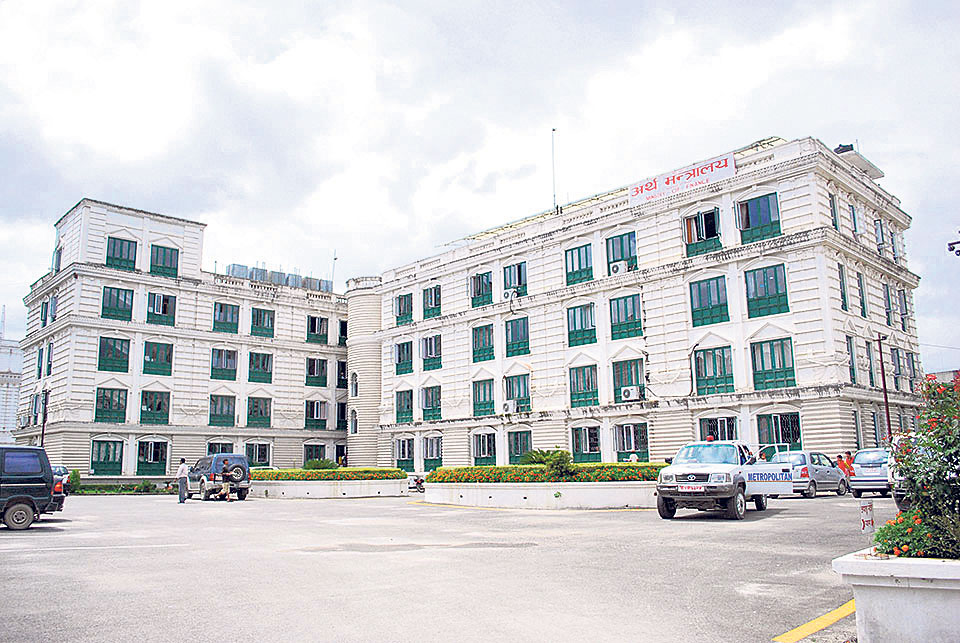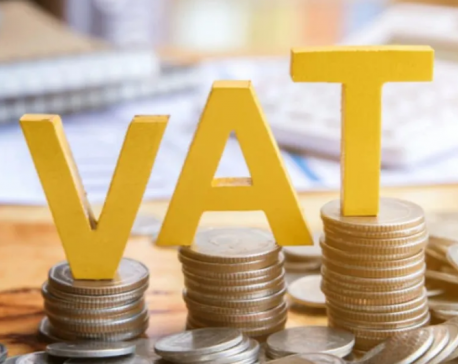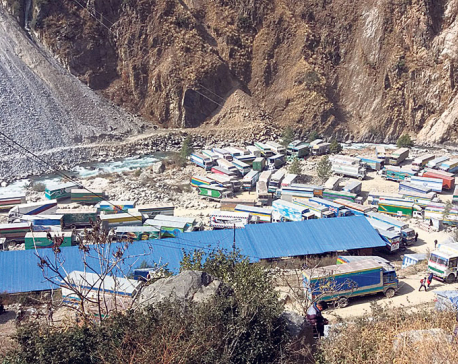
OR
Revenue collection from domestic sources on the rise
Published On: March 30, 2020 10:40 AM NPT By: Republica | @RepublicaNepal

Govt mobilizes almost half of the revised target of Rs 1.05 trillion in seven months
KATHMANDU, March 30: The government's aim to switch to domestic sources from taxes on imported goods for major tax revenue collection seems to have yielded success to some extent with the significant rise in value added tax (VAT) from internal economic activities.
Records of the Ministry of Finance shows that the collection of VAT from internal sources was increased by 34.7% over the first seven months of the current fiscal year, while tax collection from imported goods fell by 3.3%. VAT is the main source of government revenue collection. In the review period, it accounted for around 29% of the total revenue collection.
Through the budget for FY2019/20, the government unveiled its plan to prioritize domestic economic activities over imported goods as the main source of tax revenue. With the policy, the government also has enforced number of tariff and non-tariff measures to restrict imports. As a result, the country's import spending fell by 3.6% to Rs 803.60 billion, shows the Current Macroeconomic Situation of Seven Months published by the Nepal Rastra Bank (NRB).
Finance ministry officials say that the stern measures in tax mobilization taken by the government helped post the desired result as per the target. “Apart from tightening the noose for VAT leakage, the measures like implementation of vehicle and consignment tracking system have also helped the government to meet the target,” said Uttar Kumar Khatri, the spokesperson for the ministry.
According to the ministry, the government collected Rs 89.39 billion in customs duty during mid-July and mid- February, down by 2% compared to the amount in the same period in the last fiscal year. Likewise, excise duty collected from imported goods plunged 7.6%, while collection from domestic sources went up by 9%.
Similarly, income tax collection was also up by 31.7% to Rs 127.75 billion, thanks to the rise in issuance of permanent account number (PAN). According to the ministry, 3.21 million individuals have received permanent account numbers as of mid-February.
During the review period, the revenue collection grew by 13.3%. Despite the notable rise in revenue collection from domestic areas, the government is likely to fall short of its ambitious target of revenue collection this year too. The government has collected Rs 515.90 billion, almost half of the revised target of Rs 1.05 trillion, in seven months of the current fiscal year.
Based on the revenue collection statistics, the government needs to collect Rs 534.10 billion in the remaining five months to meet its target. The chances, however, appear slim due to the unusual circumstances resulting from the COVID-19 outbreak. To check the possible spread of the disease, the government has enforced a nationwide lockdown since Tuesday. The high-level committee meeting on Sunday has extended the lockdown by one more week. The lockdown has affected most of the economic activities across the country.
During the review period, the revenue collection grew by 13.3%. Despite notable rise in the revenue collection from domestic areas, the government yet seems to fall short of its own ambitious target of revenue collection this year too. The government collected revenue of Rs 515.90 billion, almost half of even the revised target of Rs 1.05 trillion in seven months.
Based on the given revenue collection statistics, the government needs to collect Rs 534.10 billion in the remaining five months to meet its target, which however has slim chance with the unusual circumstances produced by the risks of COVID-19. To check the possible spread of the disease, the government since last Tuesday has been imposing the nationwide lockdown, the high-level committee meeting on Sunday has extended by additional one week. With the reason, most of the economic activities have adversely been affected.
You May Like This

Nepal’s Experience with VAT
Despite poor performance of VAT in some functional areas such as filing and refund, VAT has been performing very well... Read More...

Increasing dependence on foreign loans calls for prudent use of the fund
KATHMANDU, Dec 12: Nepal received foreign loans worth Rs 24.95 billion in the first four months of the current fiscal... Read More...

Rasuwagadhi customs collected Rs 10b in 11 months
RASUWAGADHI, June 17: Rasuwagadhi Customs Office has collected revenue of Rs 9.84 billion in first 11 months of current fiscal... Read More...











Just In
- Challenges Confronting the New Coalition
- NRB introduces cautiously flexible measures to address ongoing slowdown in various economic sectors
- Forced Covid-19 cremations: is it too late for redemption?
- NRB to provide collateral-free loans to foreign employment seekers
- NEB to publish Grade 12 results next week
- Body handover begins; Relatives remain dissatisfied with insurance, compensation amount
- NC defers its plan to join Koshi govt
- NRB to review microfinance loan interest rate







Leave A Comment